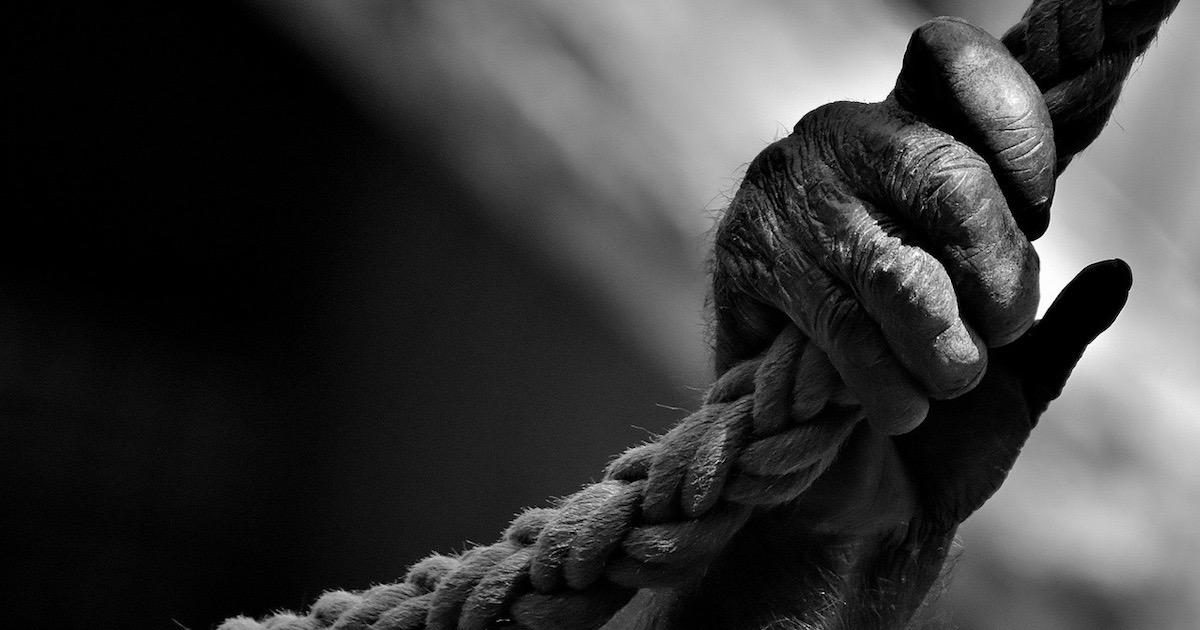 Evolution
Evolution
 Human Origins
Human Origins
 Intelligent Design
Intelligent Design
Adam and the Genome and Synteny


As we saw yesterday in this series, in Adam and the Genome, biologist and BioLogos author Dennis Venema argues that “common design” doesn’t work in explaining human-ape genetic similarity. The prominent theistic evolutionist also thinks that explanation fails in explaining large-scale architectural similarities between the human genome and the genomes of other higher primates. Those similarities go far beyond mere DNA sequence. He writes:
To return to our “genome as book” metaphor, we also observe that humans and chimpanzees not only have nearly identical genomes, but that our genomes are organized in the same spatial pattern. At the sentence, paragraph, and chapter level, our two “books” are organized in the same way. As before, there is no biological reason why this needs to be the case. We, or chimpanzees, would be fine with our genes in very different spatial arrangements, and placing our genes into a different arrangement would be well within God’s creative abilities. Yet what we observe, once again, is consistent with the hypothesis that the present-day human and chimpanzee genomes are slightly modified descendants of what was once the genome of a shared ancestral species.
(Adam and the Genome, pp. 32-33)
Venema is correct that there are large-scale organizational similarities between human and chimp genomes. But he’s simply wrong to suggest that these similarities are unrelated to function and therefore indicate nothing more than common ancestry. His claim that “there is no biological reason why this needs to be the case” contradicts much evidence in molecular biology. The latest evidence in genomics and molecular biology has shown that the large-scale spatial organization of the genome, or what some call “synteny,” is very important to genome functionality.
Here’s a compelling passage from the chapter “Why We Aren’t Chimps,” by Ann Gauger, Ola Hössjer, and Colin Reeves in the book Theistic Evolution: A Scientific, Philosophical, and Theological Critique:
Synteny refers to how well chromosomal sequences from different species align with one another. If they align well it is assumed to indicate they came from a common ancestor. But there is a possible functional explanation — chromosomal structure has a profound effect on gene regulation and where genes are located in the nucleus affects their expression.
Long- and short-range interactions between genes, the way the DNA loops, whether genes are sequestered or not, all these things are affected by chromosomal order. Rodley et al. say, “The association of chromosomes with each other and other nuclear components plays a critical role in nuclear organization and genome function. … Genomes are highly ordered yet dynamic entities in which chromosomal positions, structures and interactions are controlled in order to regulate nuclear processes.” This sophistication is a strong argument for design.
Thus, it is possible that any sequence similarity there might be due to a shared function. If the sequence similarity is due to function, then it need not indicate common ancestry.
The 2009 paper they cite is Rodley, C. D. M., F. Bertels, B. Jones, and J. M. O’Sullivan, “Global identification of yeast chromosome interactions using genome conformation capture,” Fungal Genetics and Biology 46 (11): 879-886.
Many other scientific papers back up these claims. Here’s a list of additional literature finding that the 3D organization of the genome is important for function:
- Jachowicz et al., “Heterochromatin establishment at pericentromeres depends on nuclear position,” Genes & Development, 27: 2427-2432 (2013)
- Verdaasdonk et al., “Centromere Tethering Confines Chromosome Domains,” Molecular Cell, 52: 1-13 (December 26, 2013)
- Filion et al., “Systematic Protein Location Mapping Reveals Five Principal Chromatin Types in Drosophila Cells,” Cell, 143: 212-224 (October 15, 2010)
- Giacomo Cavalli, “From Linear Genes to Epigenetic Inheritance of Three-dimensional Epigenomes,” Journal of Molecular Biology (2011)
- Justin M. O’Sullivan, “Chromosome Organizaton in Simple and Complex Unicellular Organisms,” Current Issues in Molecular Biology, 13: 37-42 (2011)
- Dirar Homouz and Andrzej S. Kudlicki, “The 3D Organization of the Yeast Genome Correlates with Co-Expression and Reflects Functional Relations between Genes,” PLOS ONE, 8: e54699 (January, 2013)
- Stephen A. Hoang and Stefan Bekiranov, “The Network Architecture of the Saccharomyces cerevisiae Genome,” PLOS ONE, 8: e81972 (December, 2013)
- An Jansen and Kevin J. Verstrepen, “Nucleosome Positioning in Saccharomyces cerevisiae,” Microbiology and Molecular Biology Reviews, June 2011, pp. 301-320 (Vol. 75:2)
- Eslami-Mossallam B, Schram RD, Tompitak M, van Noort J, Schiessel H, “Multiplexing Genetic and Nucleosome Positioning Codes: A Computational Approach.” PLOS ONE 11(6): e0156905 (2016)
For a couple of other articles reviewing papers that show how important the 3D organization of the genome is, please see:
- “Paper: ‘Irreducible Organization” of DNA Necessary for Genetic Regulation“
- “Second layer of information in DNA confirmed“
Finally, see: “Does Genome Evidence Support Human-Ape Common Ancestry?“
All this confirms that synteny might very well exist due to functional requirements. Venema, in this and other matters, does not have the evidence on his side. Finding that Gene A is next to Gene B in two different organisms might be just as functionally important as having Gene A and Gene B (somewhere in the genome) in the first place.
This point is, moreover, a confirmed prediction of ID: that we will find more layers of function and information in the genome beyond merely the finely tuned base pair sequence in genes. For these reasons, besides having no necessary relevance to Adam and Eve, synteny is one of the least persuasive arguments for common ancestry. Next?
Photo credit: Alexas_Fotos, via Pixabay.
